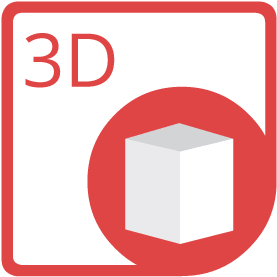
Convert JT to OBJ via Java
JT to OBJ conversion using Java library without any 3D modeling software.
How to Convert JT to OBJ Using Java
In order to render JT to OBJ, we’ll use
API which is a feature-rich, powerful and easy to use conversion API for Java platform. You can download its latest version directly from
and install it within your Maven-based project by adding the following configurations to the pom.xml.
Repository
<repository>
<id>AsposeJavaAPI</id>
<name>Aspose Java API</name>
<url>https://repository.aspose.com/repo/</url>
</repository>
Dependency
<dependency>
<groupId>com.aspose</groupId>
<artifactId>aspose-3d</artifactId>
<version>version of aspose-3d API</version>
<classifier>jdk17</classifier>
</dependency>
Steps to Convert JT to OBJ via Java
Java programmers can easily convert JT file to OBJ in just a few lines of code.
- Load JT file via the constructor of Scene class
- Create an instance of ObjSaveOptions
- Set OBJ specific properties for advanced conversion
- Call Scene.save method
- Pass the output path with OBJ file extension & object of ObjSaveOptions
System Requirements
Before running the Java conversion code, make sure that you have the following prerequisites.
- Microsoft Windows or a compatible OS with Java Runtime Environment for JSP/JSF Application and Desktop Applications.
- Get latest version of Aspose.3D for Java directly from Maven.
Java 3D Scene Manipulation Library
Aspose.3D is a CAD and Gameware API to load, modify and convert 3D files. API is a standalone and does not require any any 3D modeling or rendering software. One can easily use API for Discreet3DS, WavefrontOBJ, STL (ASCII, Binary), Universal3D, FBX (ASCII, Binary), Collada, glTF, PLY, GLB, DirectX and more formats.JT What is JT File Format?
JT (Jupiter Tessellation) is an efficient, industry-focused and flexible ISO-standardized 3D data format developed by Siemens PLM Software. Mechanical CAD domains of Aerospace, automotive industry, and Heavy Equipment use JT as their most leading 3D visualization format. JT format is a scene graph that supports the attributes and nodes that are CAD specific. Sophisticated compression techniques are used to store facet data (triangles). This format is structured to support visual attributes, product and manufacturing information (PMI), and Metadata. There is a good support for asynchronous streaming of content. In heavy mechanical industry, professionals use JT file in their CAD solutions and product lifecycle management (PLM) software programs to examine the geometry of complicated goods.
Read MoreOBJ What is OBJ File Format?
OBJ files are used by Wavefront's Advanced Visualizer application to define and store the geometric objects. Backward and forward transmission of geometric data is made possible through OBJ files. Both polygonal geometry like points, lines, texture vertices, faces and free-form geometry (curves and surfaces) are supported by OBJ format. This format does not support animation or information related to light and position of scenes. An OBJ file is usually an end product of the 3D modeling process generated by a CAD (Computer Aided Design). The default order to store vertices is counter-clockwise avoiding explicit declaration of face normals. Though OBJ files declare scale information in a comment line yet no units have been declared for OBJ coordinates.
Read MoreOther Supported Conversions
You can also convert JT into many other file formats including few listed below.